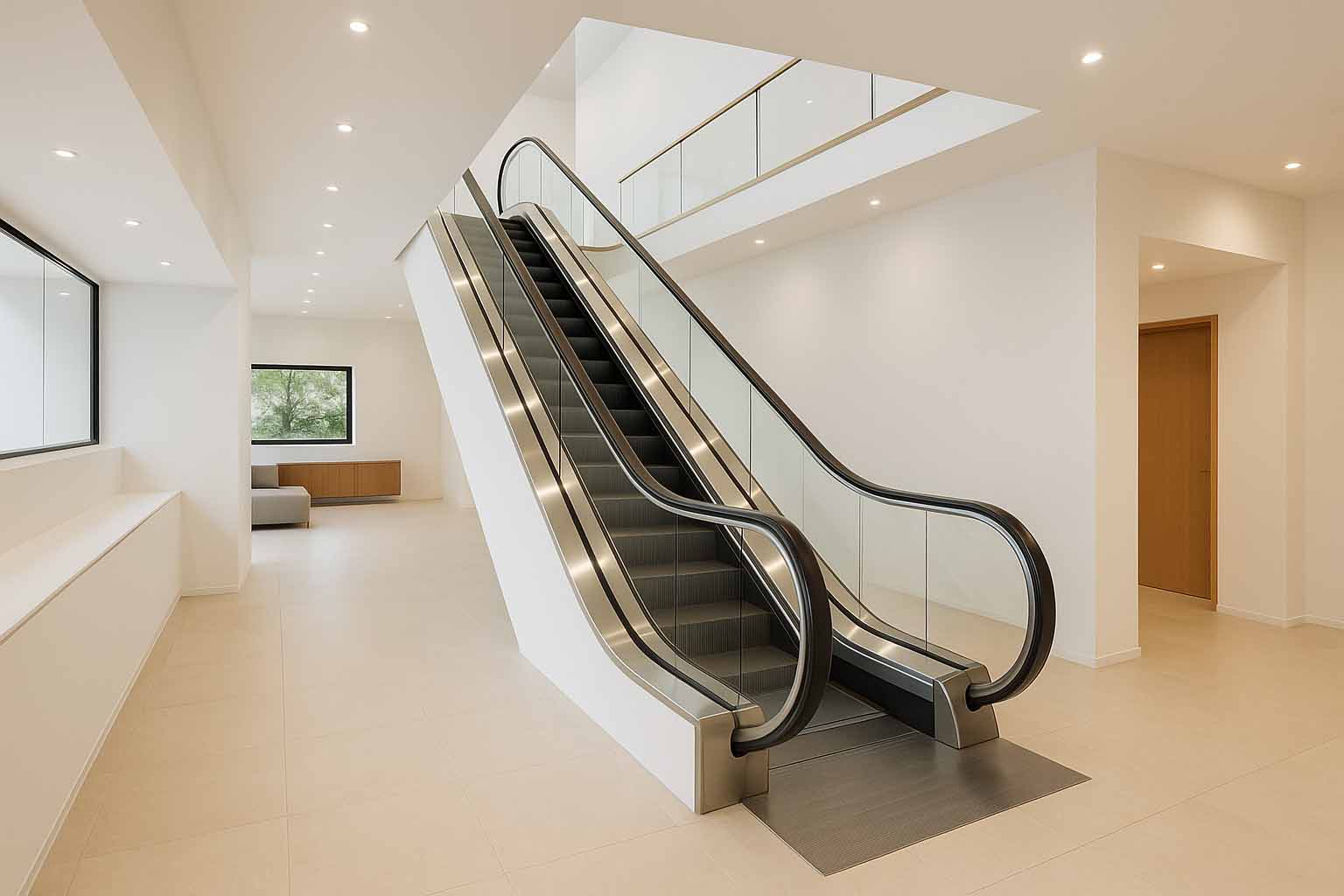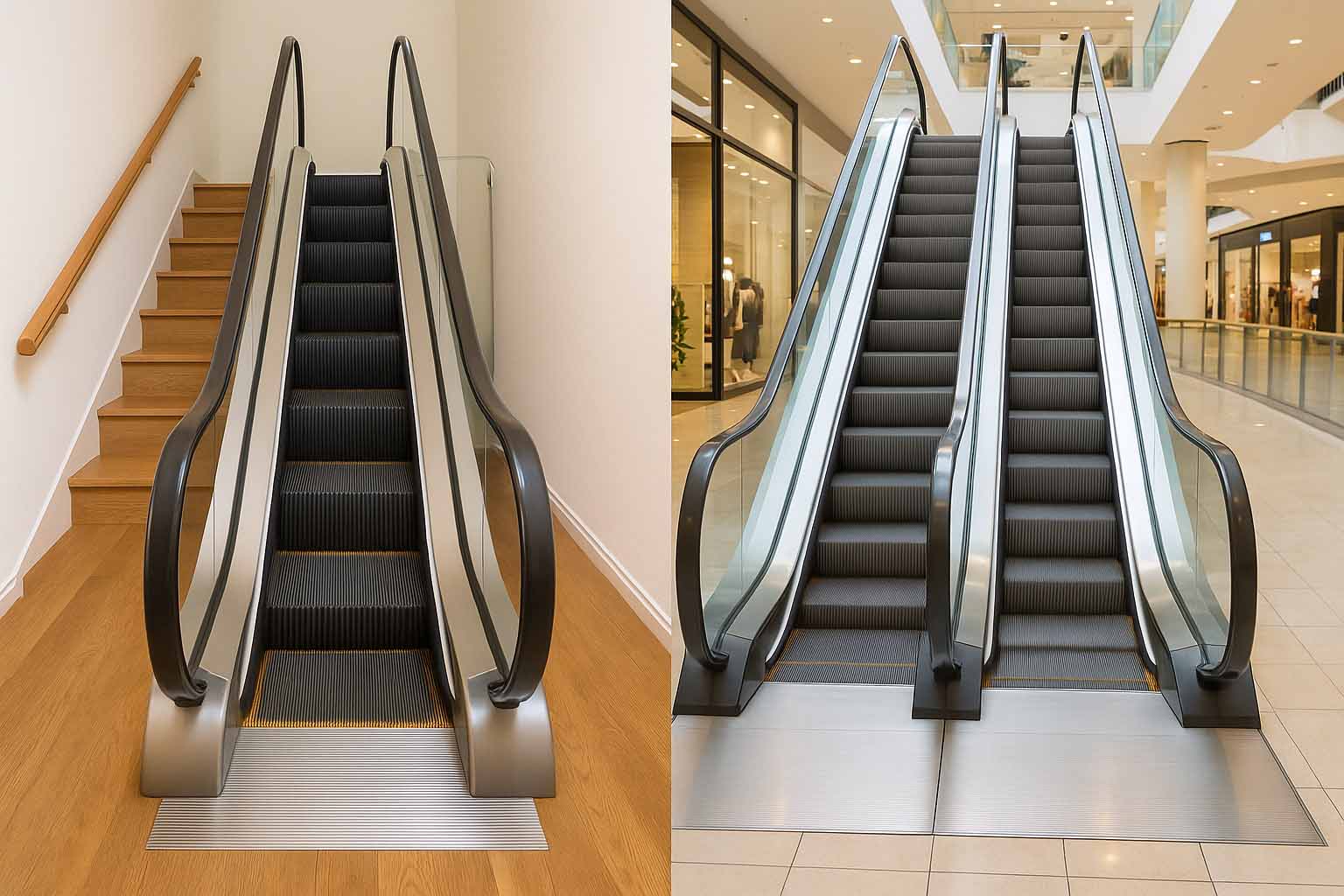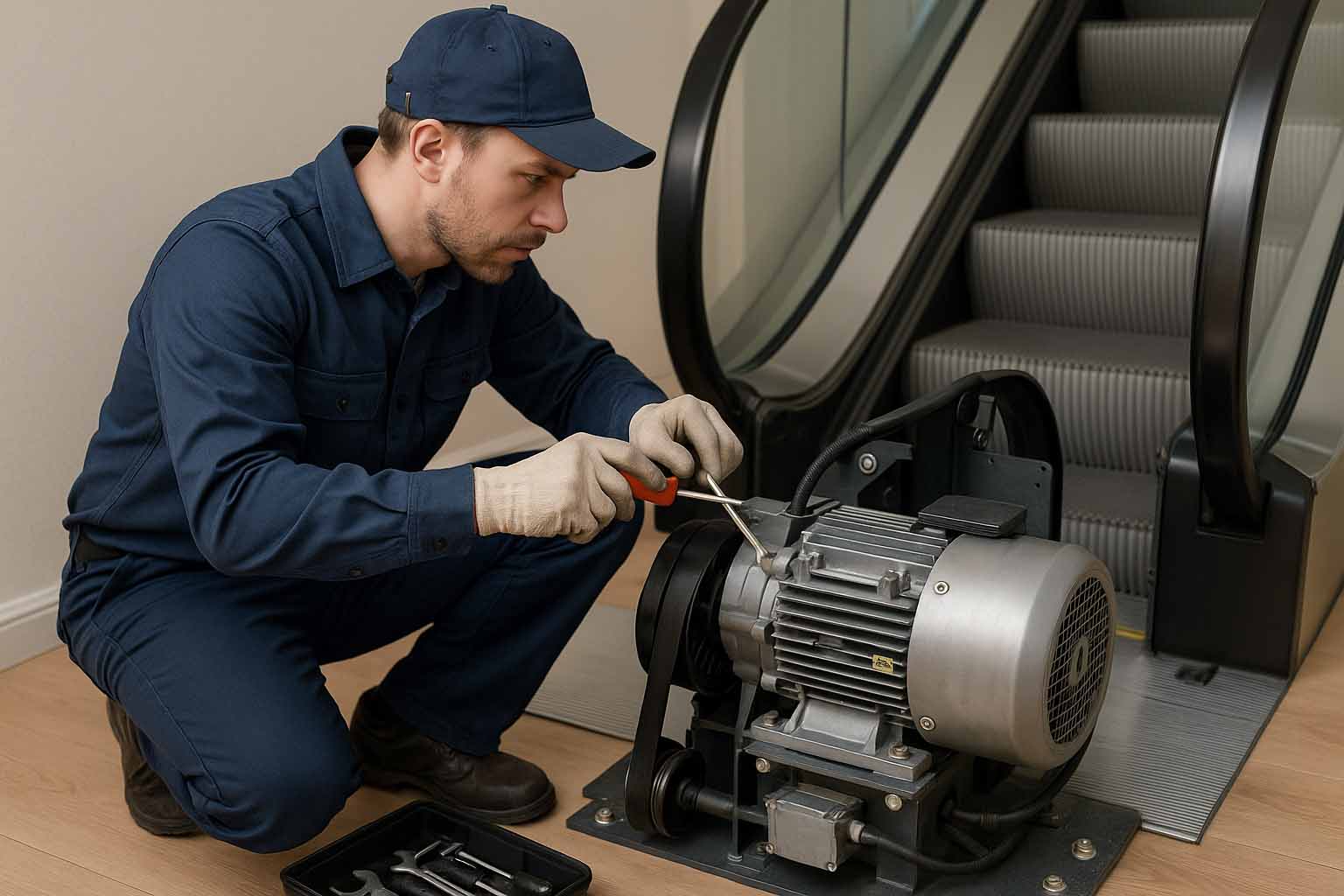
In recent years, home escalators have become a smart addition to luxury villas, duplex houses, and multi-level residences. Beyond comfort and accessibility, they elevate interior design and can increase property value. Contrary to popular belief, escalators aren’t limited to malls and public spaces; compact residential models are engineered for homes where space is at a premium. With the right specification and a professional installation plan, a residential escalator delivers safety, convenience, and a distinctly modern look.
A home escalator is a compact, energy-efficient escalator designed for low-traffic, family use. Compared to commercial or industrial machines, residential models prioritize quiet operation, smooth ride quality, and customizable finishes to match interior décor. Safety features such as emergency stop, anti-slip treads, skirt brushes, obstruction detection, and speed control are standard. For families with seniors or children, a home escalator can simplify everyday movement between floors and reduce fall risks on traditional stairs.

Commercial escalators are built for heavy footfall—shopping centers, airports, and metro stations—where durability and throughput matter most. They use larger drives, higher-duty components, and withstand long operating hours. A home escalator, by contrast, is engineered for comfort, aesthetics, and energy efficiency in low-traffic settings. This difference results in a smaller footprint, lower noise levels, reduced electricity usage, and typically lower maintenance spending over the product’s lifetime.
Installing a residential escalator brings several advantages. First, it delivers effortless mobility between levels—especially helpful for seniors and kids. Second, it enhances perceived luxury and may raise resale value by differentiating the property. Third, it can integrate seamlessly with interior design using glass balustrades, brushed stainless, wood accents, or ambient LED lighting. Fourth, the system’s standby modes and variable-frequency drives support low power consumption. Finally, routine servicing is straightforward and cost-effective compared with high-traffic commercial units.
A home escalator fits more scenarios than just duplex living areas. Popular placements include villas and penthouses, where it creates a showcase connection between levels; private clinics or home offices to streamline visitor flow; and boutique retail environments that want a premium, space-saving vertical connection. It’s also a practical alternative where an elevator shaft isn’t feasible, offering continuous access without waiting times.
When buying, start with space planning: floor-to-floor rise, run length, typical slope (30° or 35°), turning radius, and step width (commonly 600–800 mm for residential). Assess component quality—high-efficiency drives, precisely machined tracks, robust chains, and alloy treads. Verify compliance with current safety requirements and request test/commissioning documentation. Review energy features such as VFD speed control and LED lighting. Lastly, ensure dependable after-sales support and spare-parts availability to minimize downtime over the product lifecycle.
| Feature | Home Escalator | Industrial Escalator |
|---|---|---|
| Footprint | Compact, space-efficient | Large, built for public areas |
| Capacity | Low (family use) | High (hundreds per hour) |
| Energy Use | Optimized, low consumption | Relatively higher |
| Install Cost | Moderate | High |
| Maintenance | Light, cost-effective | Frequent, higher cost |
| Design Focus | Decor-friendly, luxury finishes | Utility, durability |
Pricing varies by rise, run, step width, finishes (glass, stainless, timber accents, lighting), component brand, and site works. While initial outlay may seem significant, a home escalator often pays off in daily convenience, premium aesthetics, and long-term property value. Total cost of ownership remains favorable due to lower energy demand and lighter maintenance compared with commercial units. Request an itemized quotation to understand each cost component clearly.

A professional residential installation follows a clear sequence: site survey and structural assessment; detailed engineering (slope, length, supports, power and control layout); structural preparation (plates, reinforcement, cabling, earthing); safe delivery and handling into the building; mechanical assembly (trusses, tracks, chains, treads, alignment); electrical and controls (panel, VFD, sensors, E-stops); finishing (balustrades, brushes, lighting, handrail); and commissioning (no-load/load tests, vibration/noise checks, protection calibration). Typical on-site installation takes about 2–4 weeks depending on customization and site readiness.

Residential maintenance is simpler than industrial upkeep. Daily/weekly checks include cleaning combs and visible surfaces and scanning for unusual wear. Monthly tasks typically cover chain and handrail tension and E-stop/sensor testing. Seasonal service involves gearbox/bearing inspection, track alignment, and controls updates if applicable. Scheduled maintenance, documented logs, and prompt spare-parts support reduce downtime and extend service life while preserving safety and ride quality.
How is a home escalator different from an elevator? An elevator transports passengers in a cabin and is ideal for accessibility and loads; a home escalator offers continuous, wait-free movement and a striking architectural feature.
Can it be installed in an existing house? Yes—after structural feasibility checks and minor modifications, most homes can accommodate a compact residential escalator.
How long does installation take? Approximately 2–4 weeks on site, subject to structural readiness and customization.
Are maintenance costs high? No. For residential duty cycles, service is light and predictable compared with commercial systems.
What should I prioritize when buying? Accurate space planning, component quality, safety compliance, energy efficiency, and reliable after-sales support.
For guidance, sizing, and an itemized quote for your residential project, get in touch with our team.
Madrid Metro sought a scalable and rugged escalator solution for some of its most critical central stations. Lion MetroFlow systems provided reliable mobility with improved accessibility, safety compliance, and operational transparency for daily commuters.
The article explores the importance of escalator maintenance, overhaul, and general service, explaining how these services can extend the lifespan of the equipment and prevent sudden breakdowns. It also outlines the differences between overhaul and general service, along with safety tips and how to choose the right company for these services.
Explore the complete guide to escalator handrails: standard, fiber-reinforced, and transparent colored types. Learn about safety roles, maintenance steps, replacement costs, and professional tips from LionLift.
Installed at Central Europe’s largest mall, our UrbanRise elevators support high-traffic mobility with quiet, smooth rides and modern aesthetics
This prestigious project in a UNESCO World Heritage site required a tailored approach. Our escalators were engineered not only for performance, but also to preserve and respect the historical beauty of the 19th-century arcade. The integration was seamless, quiet, and visually harmonious.